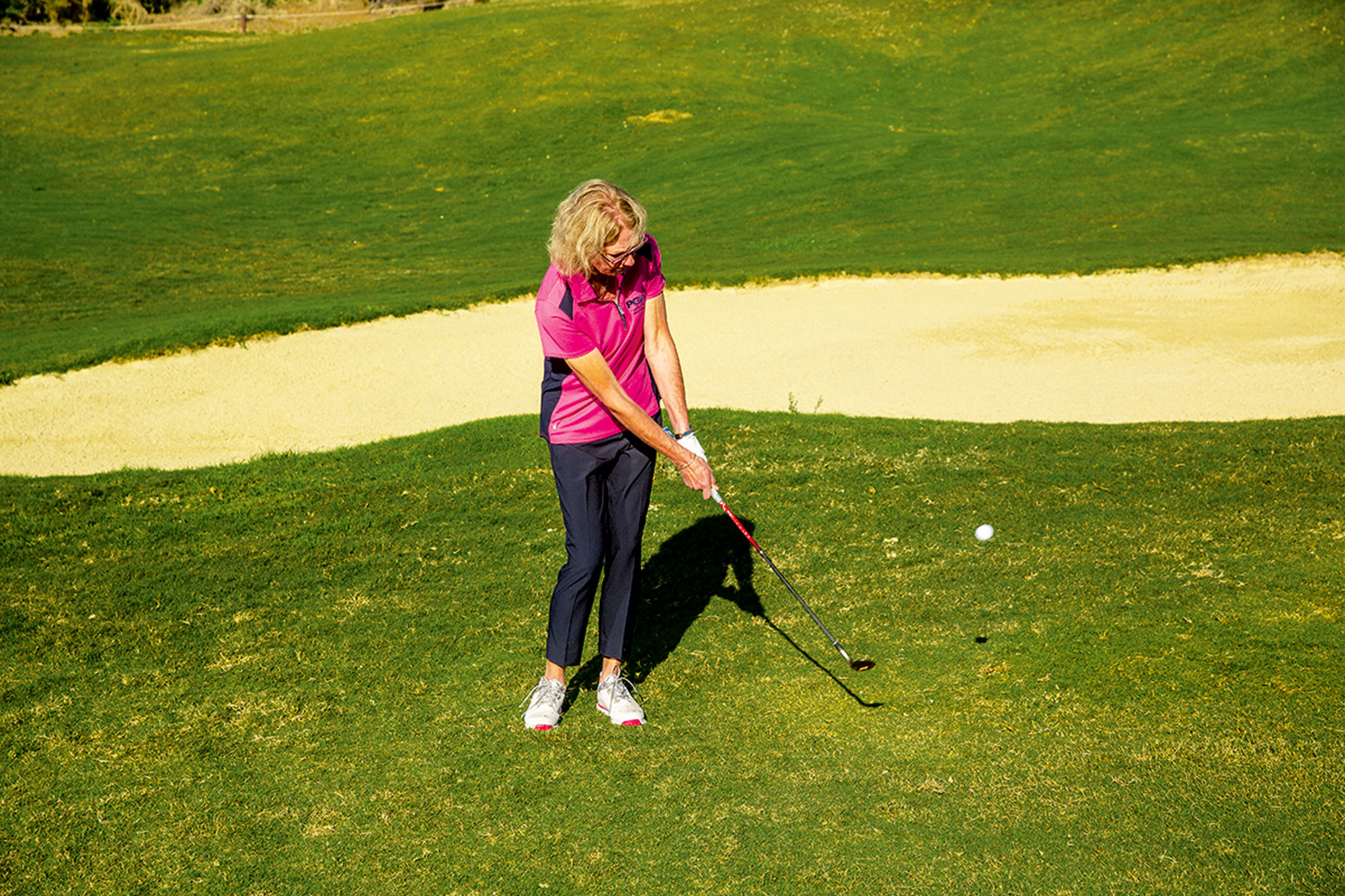
When playing chip shots around the green, I think it's fair to say some are easier than others.
When learning how to chip in golf, we tend to spend most of our time with the full putting surface in view, but the pressure ramps up when chipping to a raised green.
Some of the most common mistakes amateur golfers make around the greens can lead to disastrous results when trying to chip to an elevated target, destroying your scorecard and leaving you nervous about your next encounter with a wedge in hand.
In this article, Golf Monthly Top 50 Coach Sarah Bennett shares her best advice on how to chip to a raised green, walking you through the process from preparation to execution so that you can master this tricky short game scenario...
How To Chip To A Raised Green In Golf
1. The Pre-Shot Preparation

Determining the landing area as part of your pre-shot routine is the key to success with this chip shot, along with distance control.
Before playing the shot, I would recommend assessing the task in hand by positioning yourself midway between the ball and the hole, allowing you sight of the base of the flag, which is often obscured.
A common fault is to overhit this kind of chip due to its flatter trajectory and increased roll. I like to pace the shot out and, when standing on the green, look back to the ball, replicating the desired length of swing.
2. Setup

At set-up, take a stance that is much narrower than usual, with feet around two clubhead widths apart for a 15- to 20-yard shot.
When it comes to how wide your stance should be for this type of shot, think of the rule 'little shot, little feet’.
Moving your hands further down the grip assists with shot control and aids wrist hinge.
Note how my hands are slightly ahead of the ball. The more forward ball position counters the uphill lie, helping with strike and trajectory
3. The Execution

Playing from an uphill lie reduces lower body movement and increases hand activity, often resulting in a closed clubface and a shot that goes left, so aim slightly right of target to allow for the physics of the slope.
Ensure your right hand covers the left thumb to prevent excessive clubface rotation. The hands then complement each other, promoting the slight wrist hinge needed.
Imagine the clubhead as a heavy object – let it swing freely and allow the body to follow.
How Do I Play The One Hop And Stop Chip Shot?
The one hop and stop chip shot is a specialist short game staple that every golfer should learn to master. Here are four simple steps to emulate the pros and nail this useful chip shot...
1. Narrow your stance a little, placing your weight around 60% on your lead side and open the clubface slightly.
2. Make a chest-high backswing but hinge your wrists to the maximum to add that additional spin on your chip shots.
3. Following this shortened backswing, make an aggressive downswing and release all th hinge from your wrists - feeling as though your right arm and the shaft are forming a straight line through impact.
4. Maintain your left wrist angle through impact, with the logo on your glove facing the target with an abbreviated finish.







